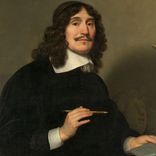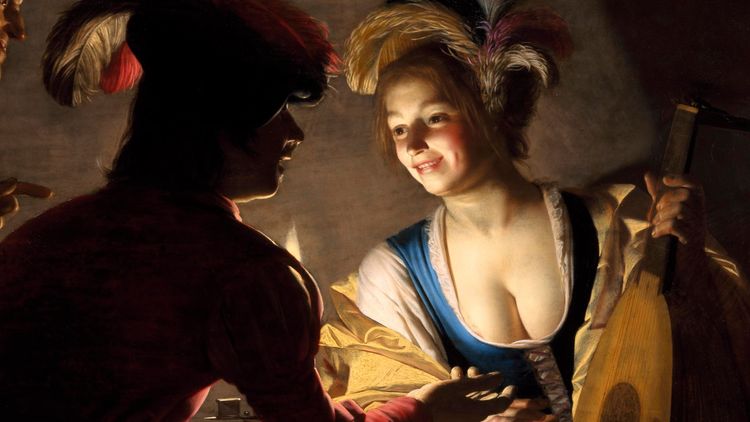
Gerard van Honthorst
Dutch painting reached great heights because artists closely studied Italian examples. One of the painters who personified this Italian influence on Dutch painting is Gerard van Honthorst. The way he captured light and darkness also influenced Rembrandt.
The life of Gerard van Honthorst
Gerard van Honthorst was born in 1592 in Utrecht. His father was also a painter, so he learned the basics of the craft at home and received lessons from Abraham Bloemaert. However, Van Honthorst wanted to further deepen his knowledge and skills, so he journeyed to Italy. In his time, Italy was the place to be for painters; that's where everything was happening.
In Italy, Gerard van Honthorst not only observed carefully but also worked actively. In the spirit of the great Caravaggio, who had already passed away by the time Van Honthorst arrived in Italy, he focused on convincingly capturing the contrast of light and darkness, known as "clair-obscur" or "chiaroscuro." He painted many scenes of nighttime darkness with a single light source. This earned him the nickname "Gerardo della Notte" (Gerard of the Night).
Gerard van Honthorst stayed in Italy for ten years and was highly productive during that time. Many of his works can still be found in Italian churches, monasteries, and other collections. In 1622, Van Honthorst re-registered with the Sint-Lucas Guild in his hometown of Utrecht. He had married his cousin, Sophia Coopman, by then.
In Utrecht and later in The Hague, where he registered in 1637, Van Honthorst turned to painting more portraits. He primarily worked on commissions, which made him feel less free, and his work took on a more obligatory tone. Starting in 1640, Gerard van Honthorst had to stand in the shadow of younger painters more and more, but he continued to be appreciated as an old master. Gerard van Honthorst passed away in 1656.
Works of Gerard van Honthorst
Dark canvases with a single bright light source, casting fascinating shadows: that's Gerard van Honthorst's chiaroscuro. To become skilled at this, the painter closely studied Italian masters like Caravaggio, but he also conducted extensive research on his own. Van Honthorst's technique found followers in Rembrandt van Rijn and other contemporaries, who used this captivating contrast of light and dark in paintings characterized by a looser, "rough" style, injecting dynamism into their works. However, Gerard van Honthorst adhered to a restrained, graceful painting style, remaining loyal to his teacher, Abraham Bloemaert, in this respect.
Gerard van Honthorst & the fun part of art
It is said that Gerard van Honthorst's finest paintings can be found in Italy. His early years as a painter were also the years when he had the greatest artistic freedom. Later, he gained international recognition, working at the court of the English King Charles I. In Holland, he became the court painter of Stadtholder William II. His decorations can be seen at Huis den Bosch Palace. Furthermore, his portraits can be admired in the building of the Dutch Senate, the Eerste Kamer der Staten Generaal.
